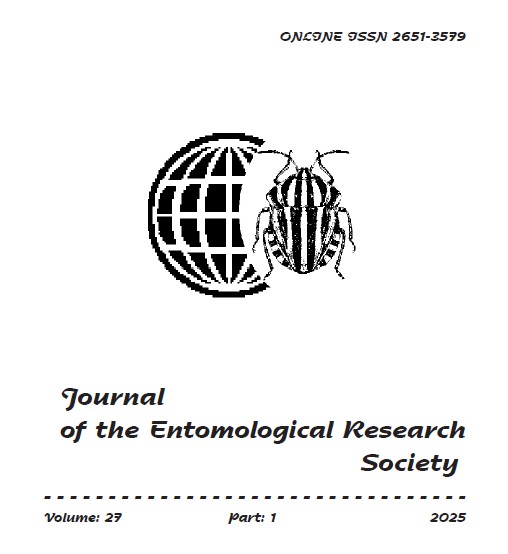Garlic Distillate as Botanical Pesticide: A Novel Biorational Control Approach of the Olive Bark Beetle
DOI:
https://doi.org/10.51963/jers.v27i1.2692Abstract
The susceptibility of olive bark beetle, Phloeotribus scarabaeoides (Bernard), larvae and adults, and its parasitoid, Cheiropachus quadrum, to garlic distillate was evaluated in laboratory bioassays. The main components of garlic extract were: diallyl-disulfide, diallyl-trisulfide, methyl-allyl-trisulfide, and vinyl-dithiin (1,2-dithiins and 1,3-dithiins) molecules. The highest lethal concentration (LC100) value of garlic distillate was estimated at 3.45 mg/L for P. scarabaeoides larvae and at 4.41 mg/L for adult olive bark beetles. The highest mortality rates, reaching 100% for both P. scarabaeoides larvae and adults, were obtained following garlic distillate (hydrolat) application at a dose of 8.19 mg/L, whereas a dose of either 0.16 or 0.49 mg/L of garlic distillate resulted in the lowest mortality rates (<40%) for both P. scarabaeoides life stages. The mortality rate of adults caused by the artificial blend (full mixture) was significantly lower than that caused by garlic distillate at 7, 14 and 21 days after treatment, while there were no significant differences between both treatments for mortality rates of olive bark beetle larvae. Neither the garlic distillate nor the garlic artificial blend negatively affected the emergence of the parasitoid C. quadrum from treated pupae or significantly affected its survival. Hence, garlic distillate acting as a biopesticide, could be developed and applied as a future, eco-friendly promising option for controlling P. scarabaeoides occurring in olive orchards.


